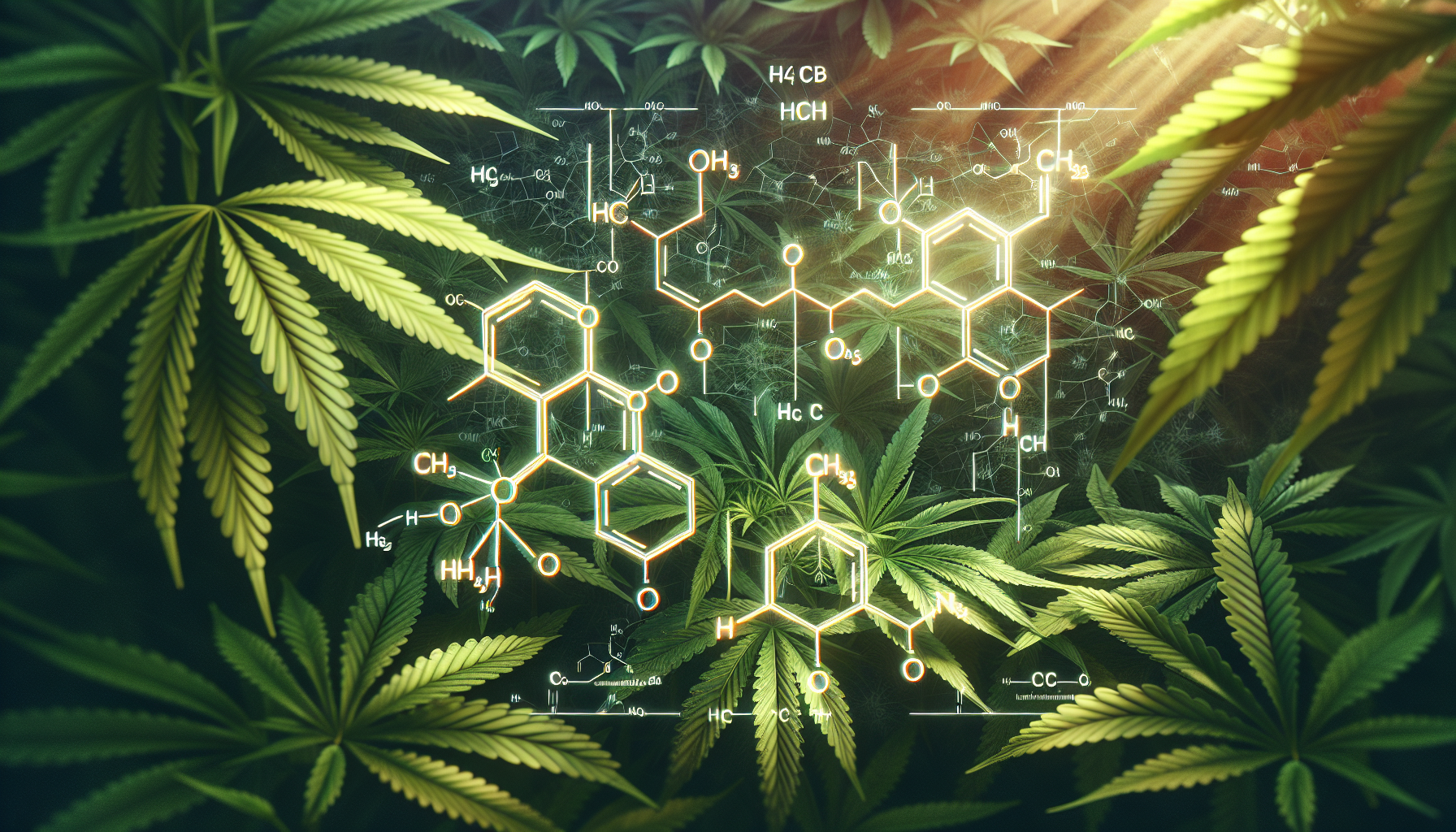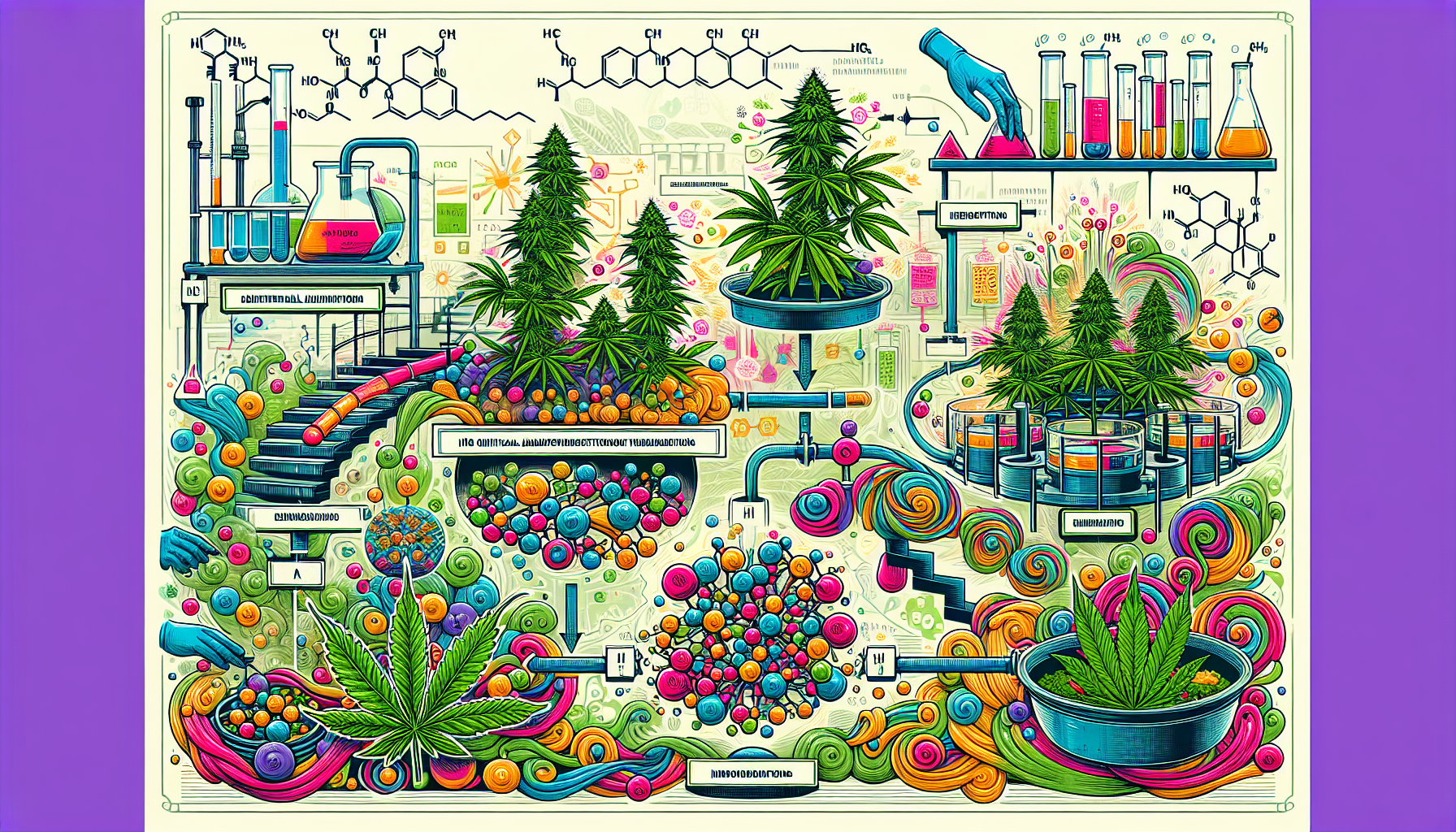What is the difference between H4CBD and HHC? This article explains the differences in effects and properties of the two cannabinoids, namely H4CBD vs. HHC, and shows when which is more suitable.
The most important things at a glance
-
H4CBD is a synthetic cannabinoid with fewer psychoactive effects than HHC, making it an attractive option for users who want to avoid these effects.
-
H4CBD has a strong binding to CB1 receptors, resulting in more intense effects on the central nervous system, while HHC affects both CB1 and CB2 receptors, producing a variety of effects in the nervous system.
-
The legal situation of HHC has changed as it was included in the NpSG on April 26, 2024, which significantly limits its availability in Germany.
H4CBD vs. HHC?
H4CBD and HHC are cannabinoids that, although present in small amounts in the cannabis plant, are mainly chemically produced in the laboratory. HHC, also known as hexahydrocannabinol, was first discovered in the 1940s by chemist Roger Adams through the hydrogenation of THC. In contrast, H4CBD is a synthetic cannabinoid that does not occur naturally in the hemp plant.
H4CBD is produced by hydrogenating CBD, resulting in a modified chemical structure. This chemical change gives H4CBD unique properties that set it apart from its natural precursors. This also means that H4CBD is not only difficult to find in its natural form, but is also specifically developed for certain purposes and applications.
differences in the effect
A key difference between H4CBD and HHC lies in their effects. H4CBD has a less potent psychoactive effect than HHC, which is often perceived as a 'high'. This makes H4CBD an attractive option for those who want to enjoy the benefits of cannabinoids without experiencing the intense psychoactive effects associated with THC.
However, H4CBD's binding to CB1 receptors, which is significantly stronger than that of CBD, may result in stronger effects on the central nervous system. HHC, on the other hand, shows a strong affinity for both CB1 and CB2 receptors, resulting in a variety of effects in the nervous system and immune system. This versatile potency explains why HHC is often described as similar to THC.
binding to cannabinoid receptors
Cannabinoid receptors play a central role in the effects of H4CBD and HHC, as they enable the interaction of these substances with the endocannabinoid system in the human body. Cannabinoids interact with specific receptors in the body, with H4CBD being able to affect both CB1 and CB2 receptors.
These bonds are crucial for the different effects produced by H4CBD and HHC. In the following subsections, we will look more closely at the binding of H4CBD to CB2 and CB1 receptors, as well as the receptor binding of HHC.
H4CBD and CB2 receptors
H4CBD binds primarily to CB2 receptors, similar to CBD. This binding results in a variety of physiological effects that are often comparable to the effects of CBD. These include pain relief and modulation of the immune system.
By interacting with the CB2 receptors, H4CBD can offer similar benefits to the well-known CBD, but with a potentially stronger effect.
H4CBD and CB1 receptors
A notable difference between H4CBD and regular CBD is H4CBD's strong affinity for CB1 receptors. H4CBD binds to CB1 receptors up to 100 times better than CBD. This enhanced binding can lead to stronger effects on the central nervous system and explains why H4CBD is considered a potentially more powerful substance.
HHC and receptor binding
HHC shows an intense binding to CB1 receptors in the brain, resulting in the psychoactive effects often described as a 'high'. This strong binding to the cannabinoid receptors makes HHC a substance that can produce intense psychoactive effects, similar to THC.
The chemical structure and binding affinity of HHC explain its potent effects and its popularity among users looking for a strong psychoactive effect.
Production of H4CBD and HHC
HHC is produced either through chemical synthesis or by extracting it from THC, although it is present in small amounts in the cannabis plant. Synthetic production requires specific chemical processes, as direct conversion of CBD to HHC is not possible. However, these processes carry risks, as HHC products can be contaminated with harmful substances if they are not rigorously tested.
The production of H4CBD and HHC can be compromised by residues of contaminants, which requires rigorous analytical procedures. Products containing H4CBD or HHC should therefore only be purchased from trusted manufacturers to ensure that they are free of heavy metals and other reaction media.
Quality assurance is a crucial factor in ensuring the safety and effectiveness of these cannabinoids.
Legal Status
The legal status of HHC in the area of flowers is currently unclear. This raises questions and creates uncertainty. Consumption of HHC can lead to a positive result in a drug test. These uncertainties make it difficult to formulate clear guidelines for the use and trade of HHC.
However, there is a strong interest in clarifying the legal situation in order to provide security to consumers.
Legality of H4CBD
The legal situation of H4CBD is not clear, which leads to uncertainty. Although HHC is currently legal in Germany as it is not subject to the Narcotics Act, the synthesis of THC to HHC is considered illegal, which increases the legal uncertainty of HHC products.
However, these uncertainties may change as more becomes known about HHC.
Legality of HHC
The legal situation of HHC is complicated and there are inconsistent opinions on its legality. On April 26, 2024, it was decided to include HHC in the NpSG, which means that HHC is no longer legally available in Germany due to this ban.
This change has significant implications for the trade and use of HHC products in Germany.
side effects and risks
In milder forms, HHC can have similar effects to THC, including intoxication and hunger.
The side effects of HHC may include:
-
nausea
-
dizziness
-
dry mouth
-
sleepiness
However, research on the long-term effects of HHC and H4CBD is insufficient, leading to uncertainty about their safety. These substances exhibit psychoactive properties and may also pose potential risks.
Dosing of H4CBD and HHC should be done carefully, with the recommendation being to start with a low dose and increase gradually. Synthetically produced HHC may carry additional risks not necessarily present with THC. More research is needed to better understand the long-term effects of HHC and THC.
use and forms of consumption
Consumption methods of H4CBD and HHC vary, with each method offering different advantages and disadvantages in terms of effects and convenience. Gummies infused with H4CBD or HHC offer a flavorful way to consume and have long-lasting effects.
Vaping is a preferred method of taking H4CBD and HHC because it allows for a quick onset of effects and is less irritating to the respiratory system. Edibles offer a slower onset of effects from H4CBD and HHC because they must first be processed through the digestive process.
Current laws in many countries allow the sale of cannabis products with a THC content of less than 0.3% or 0.2%. This variety of consumption methods allows consumers to choose the method that is best for them.
Summary
Research into H4CBD and HHC has shown that both substances have unique properties and effects. While H4CBD has less psychoactive effects and binds primarily to CB2 receptors, HHC exhibits intense psychoactive effects by binding to CB1 receptors. Both cannabinoids offer interesting possibilities for medical and recreational use, although their legal status and potential risks still need further research.
The production of these cannabinoids requires specific chemical processes and strict quality controls to ensure that they are free of harmful substances. The legal uncertainty surrounding H4CBD and HHC makes it necessary for consumers and manufacturers to remain vigilant and informed about current developments.
In conclusion, H4CBD and HHC open up exciting new avenues in the world of cannabinoids. With further research and clear legal regulations, these substances can be used safely and effectively.
Frequently Asked Questions
What are H4CBD and HHC?
H4CBD and HHC are synthetically produced cannabinoids that occur in small amounts in cannabis. They differ in their chemical structure and possible effects.
Why should products containing H4CBD or HHC only be purchased from trusted manufacturers?
Products containing H4CBD or HHC should only be purchased from trusted manufacturers, as they may be contaminated with heavy metals and other dangerous reaction media due to improper manufacturing processes. The quality and safety of these products is crucial to your health.
How does the effect of H4CBD differ from HHC?
H4CBD is less potent and less psychoactive compared to HHC, which produces a noticeable "high" experience.
Which receptors does H4CBD mainly bind to?
H4CBD binds primarily to CB2 receptors, similar to CBD.
What was decided on April 26, 2024 regarding HHC?
On April 26, 2024, it was decided to include HHC in the NpSG, which means it is no longer legally available in Germany.






Share:
Top Dabs – Quality, Purchase and Application Tips
Why HHC Gummies Are Taking the Market by Storm